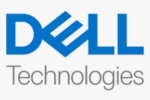Happy April Fool’s Day! It was as always an interesting week in the world of HPC-AI, this edition of HPC News Bytes includes commentary on: Microsoft and….
HPC News Bytes 20240401: A $100B AI Data Center, Eviden Says It’s Healthy, Alibaba’s RISC-V Chip, New Optical Interconnect Group, Nvidia Fights CUDA Translation
HPC News Bytes 20240219: AI Safety and Governance, Running CUDA Apps on ROCm, DOE’s SLATE, New Advanced Chips
Happy President’s Day morning to everyone! Today’s HPC News Bytes races (6:22) around the HPC-AI landscape with comments on: developments in AI security and governance, running CUDA (NVIDIA) apps on ROCm (AMD), DOE’s Exascale Software Linear….
NVIDIA at GTC: 60+ Updates to CUDA-X Libraries for Accelerated Computing
As NVIDIA kicked off virtual GTC this morning, the company unveiled more than 60 updates to its CUDA-X libraries, tools and technologies for developers building accelerated applications in HPC-related fields such as 6G, quantum computing, genomics, drug discovery and logistics optimization, as well as robotics, cybersecurity and data analytics. NVIDIA also said the CUDA platform […]
The Hyperion-insideHPC Interviews: Ryan Quick on the ‘Prometheus Fire’ where HPC, Hyperscale and AI Converge
Ryan Quick works at the crossroads of advanced technology innovation, where hyperscale, HPC and AI come together. A principal and co-founder of boutique consulting firm Providentia Worldwide, which implements systems solutions for its clientele, Quick says edge and IoT are two catalysts bringing about the day when HPC technologies will “really start to mix and match” – even within vendors’ own product lines.
Precision Medicine pushes demand for HPC at the Edge: AI on the Fly ® Delivers
In this special guest feature, Tim Miller from One Stop Systems writes that by bringing specialized, high performance computing capabilities to the edge through AI on the Fly, OSS is helping the industry deliver on the enormous potential of precision medicine. “The common elements of these solutions are high data rate acquisition, high speed low latency storage, and efficient high performance compute analytics. With OSS, all of these building block elements are connected seamlessly with memory mapped PCI Express interconnect configured and customized as appropriate, to meet the specific environmental requirements of ‘in the field’ installations.”
CUDA-Python and RAPIDS for blazing fast scientific computing
Abe Stern from NVIDIA gave this talk at the ECSS Symposium. “We will introduce Numba and RAPIDS for GPU programming in Python. Numba allows us to write just-in-time compiled CUDA code in Python, giving us easy access to the power of GPUs from a powerful high-level language. RAPIDS is a suite of tools with a Python interface for machine learning and dataframe operations. Together, Numba and RAPIDS represent a potent set of tools for rapid prototyping, development, and analysis for scientific computing. We will cover the basics of each library and go over simple examples to get users started.”
How NVIDIA Enables Scientific Research for HPC Developers
“Researchers, scientists, and developers are advancing science by accelerating their high performance computing applications on NVIDIA GPUs using specialized libraries, directives, and language-based programming models. From computational science to AI, CUDA-X HPC, OpenACC, and CUDA are GPU-accelerating applications to deliver groundbreaking scientific discoveries. And popular languages like C, C++, Fortran, and Python are being used to develop, optimize, and deploy these applications.”
NVIDIA and Arm look to accelerate HPC Worldwide
In this video, NVIDIA’s Duncan Poole and Arm’s David Lecomber explain how the two company’s accelerate the world’s fastest supercomputers. “At SC19, NVIDIA introduced a reference design platform that enables companies to quickly build GPU-accelerated Arm-based servers, driving a new era of high performance computing for a growing range of applications in science and industry. The reference design platform — consisting of hardware and software building blocks — responds to growing demand in the HPC community to harness a broader range of CPU architectures.”













